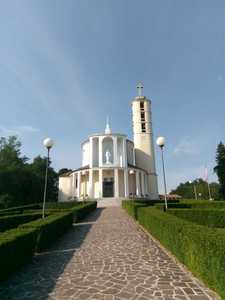22355329
Reading comprehension Test
Descripción
Sin etiquetas
Test por Sandra Gutierrez, actualizado hace más de 1 año
Más
Menos

|
Creado por Sandra Gutierrez
hace más de 4 años
|
|
Resumen del Recurso
Pregunta 1
Pregunta
"Animals in the Ocean: the Biggest and the Smallest"
The biggest animal in the whole world lives in the ocean. It's The blue whale. In fact, it's the biggest animal that has ever lived. It's bigger than any dinosaur! Some of the world's smallest animals live in the ocean, too. Zooplankton is made up of many kinds of very tiny
animals. They drift on the ocean currents. Some kinds of zooplankton are larvae. They will turn into bigger animals like sponges or fish. Some kinds of zooplankton
are tiny animals made of only one cell. They will not turn into something bigger. Some kinds of zooplankton are
tiny crustaceans. Crustaceans are animals with hard shells like crabs and lobsters. Krill and copepods are two tiny crustaceans. They are the food for many ocean animals, including the biggest-the blue whale. Krill have a pink colour as shrimp do. There are so many krill in the ocean sometimes that it looks like a pink cloud. The blue whale swims through this "cloud" with its mouth open and gulps in a mouthful. It strains the zooplankton through its baleen. Blue whales, and many other whales, have baleen instead of teeth. The biggest animal in the ocean eats the smallest ones!
1. What is the biggest animal that has ever lived?
Respuesta
-
a. White shark
-
b. Copepods
-
c. Blue whales
-
d. Blue crustaceans
Pregunta 2
Pregunta
2. Zooplankton is ________
Respuesta
-
a. Tiny animals that live in zoos.
-
b. Tiny animals that drift on the ocean currents and are food for many ocean animals.
-
c. Tiny plants that are food for many ocean animals
-
d. None of the above.
Pregunta 3
Pregunta
3. Krill are a kind of _________
Respuesta
-
a. Crustacean
-
b. animals with a hard shell.
-
c. food for baleen whales.
-
d. all of the above.
Pregunta 4
Pregunta
4. From reading the passage you can guess that "larvae" are ___
Respuesta
-
a. immature or "baby" forms of some animals.
-
b. the only food for blue whales.
-
c. smaller than other kinds of zooplankton.
-
d. bigger than other kinds of zooplankton.
Pregunta 5
Pregunta
5. Copepods are____
Respuesta
-
a. Big crustaceans.
-
b. tiny animals that eat blue whales.
-
c. tiny animals eaten by blue whales
-
d. tiny crustaceans that eat blue whales.
Pregunta 6
Pregunta
6. Blue whales don´t have teeth, they strain the zooplankton through their ________
Respuesta
-
a. tooth.
-
b. clouds
-
c. fangs
-
d. baleen
¿Quieres crear tus propios Tests gratis con GoConqr? Más información.
